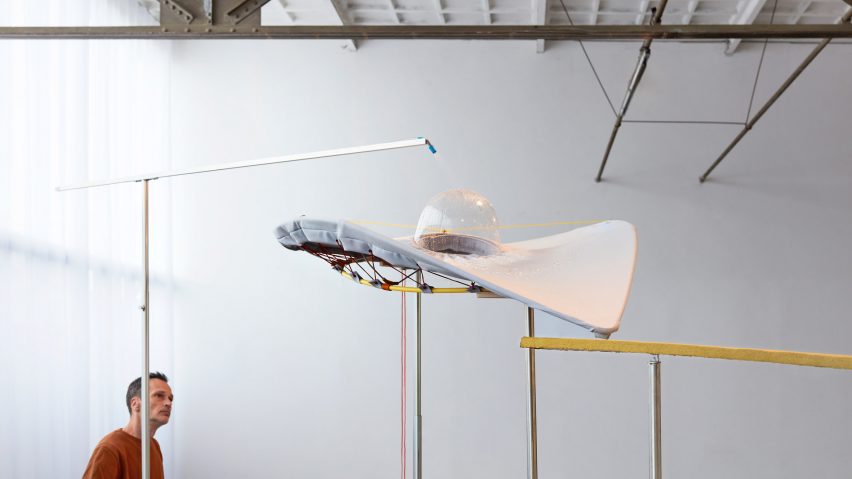
Slow-motion Flow fountain seeks to "mesmerise" spectators away from their phones
Design collective Dutch Invertuals created an installation that encourages visitors to find beauty in the simple things at this year's Dutch Design Week.
The Flow fountain allows visitors to follow a single glittering drop of water as it traverses various terrains, each devised by a different designer and finished almost entirely in wool, which is a natural water repellant.
Much like a Rube Goldberg machine, the installation was designed to perform a simple task in an overly complicated way, slowing the droplets' descent towards the ground so they can be traced by the human eye.
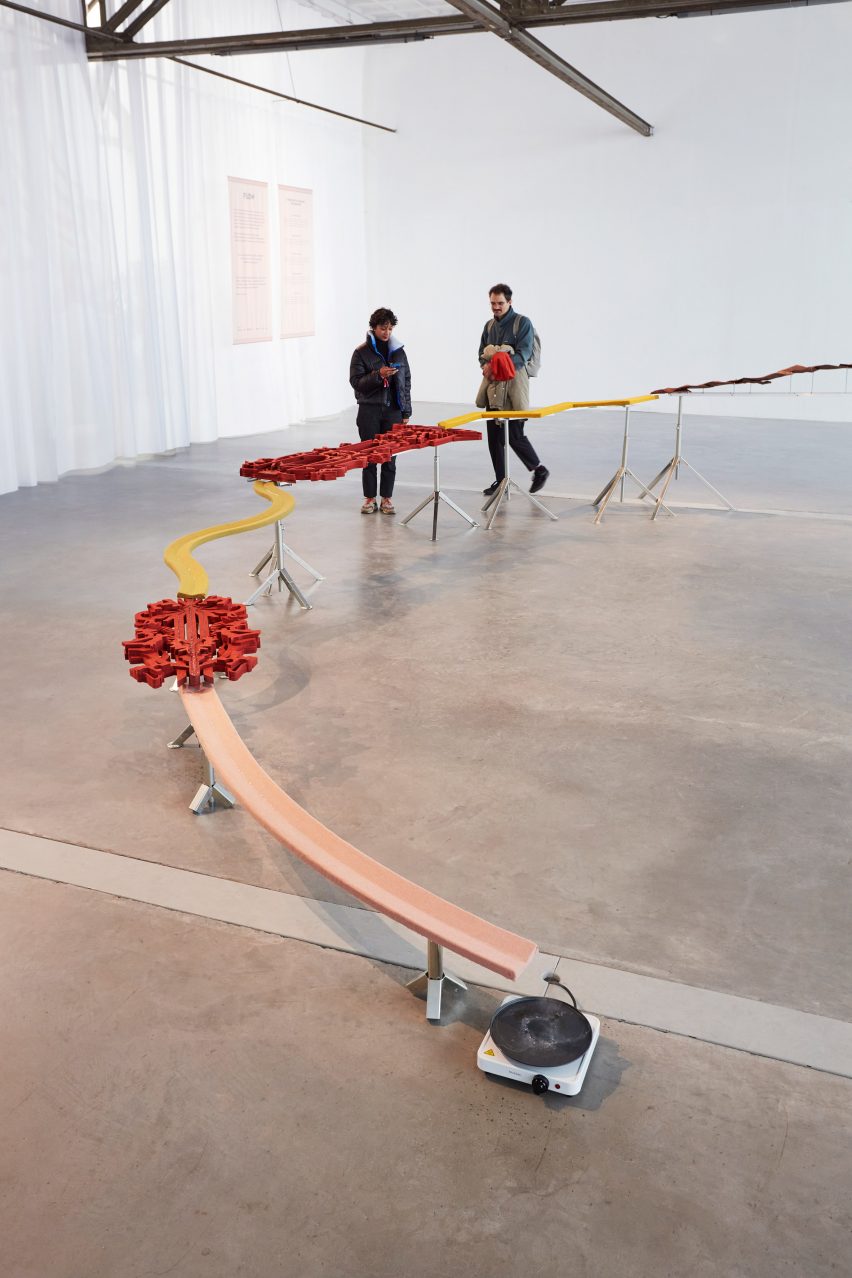
In this way, the project hopes to draw visitors' attention away from their screens and the dopamine-driven feedback loops of social media to help them be more mindful and present in the moment.
"Everyone has become a junkie for dopamine," explained Remco van de Craats, one of the designers behind the project and a longtime collaborator of Dutch Invertuals with his studio EDHV.
"To break away from that, we're trying to say look: there's beauty all around us, even in a simple drop of water."
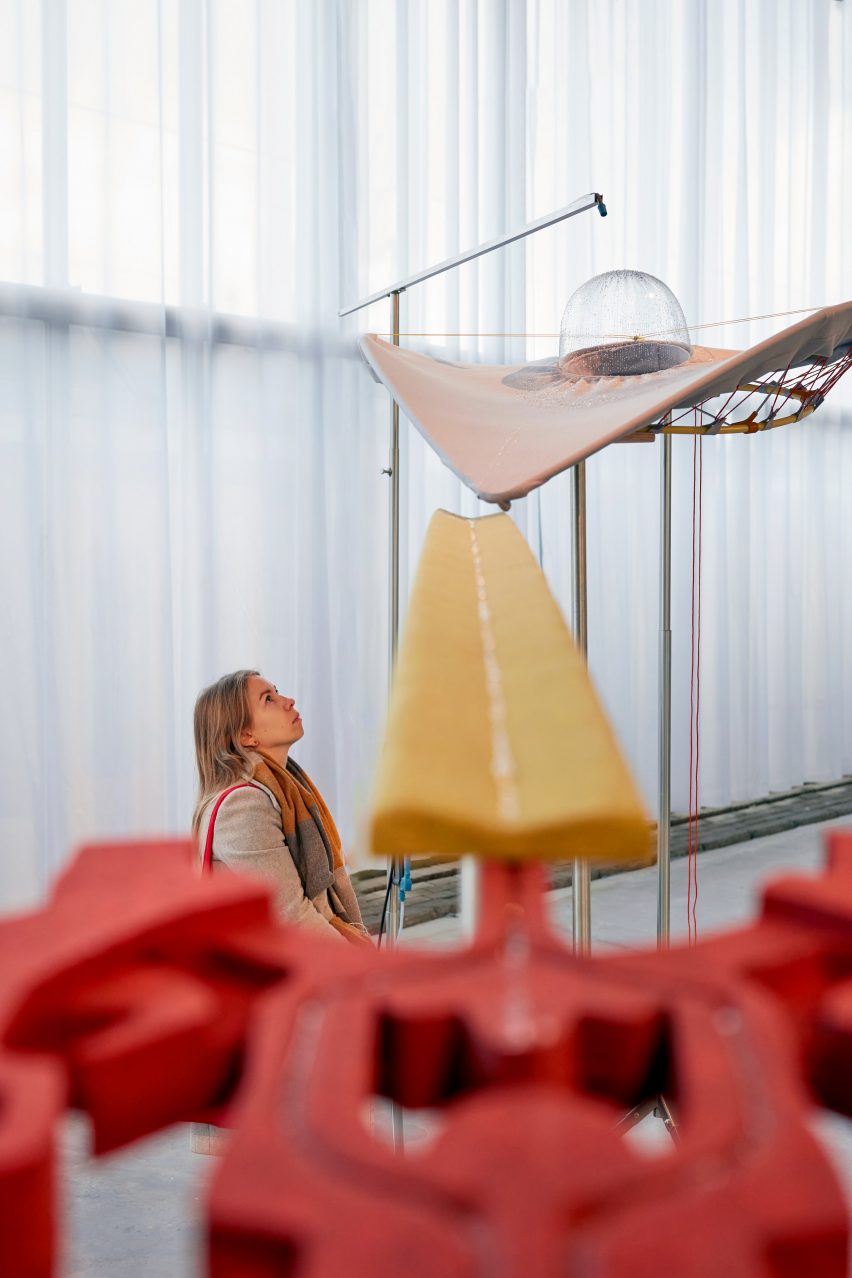
Flow was conceived as a kind of Gesamtkunstwerk – a total work of art as proposed by the Bauhaus school – and is the result of a collaboration between EDHV and designers Béla Bezold, Ralf Gloudeman and Teresa Fernández-Pello.
The project formed a marked departure for Dutch Invertuals, which has historically taken Dutch Design Week as an opportunity to host big group shows on topics from overconsumption to the design process and the shape of the circle.
"We felt that it was not appropriate to do another show with all these pedestals with projects and products in a world that is clearly changing," Van de Craats told Dezeen.
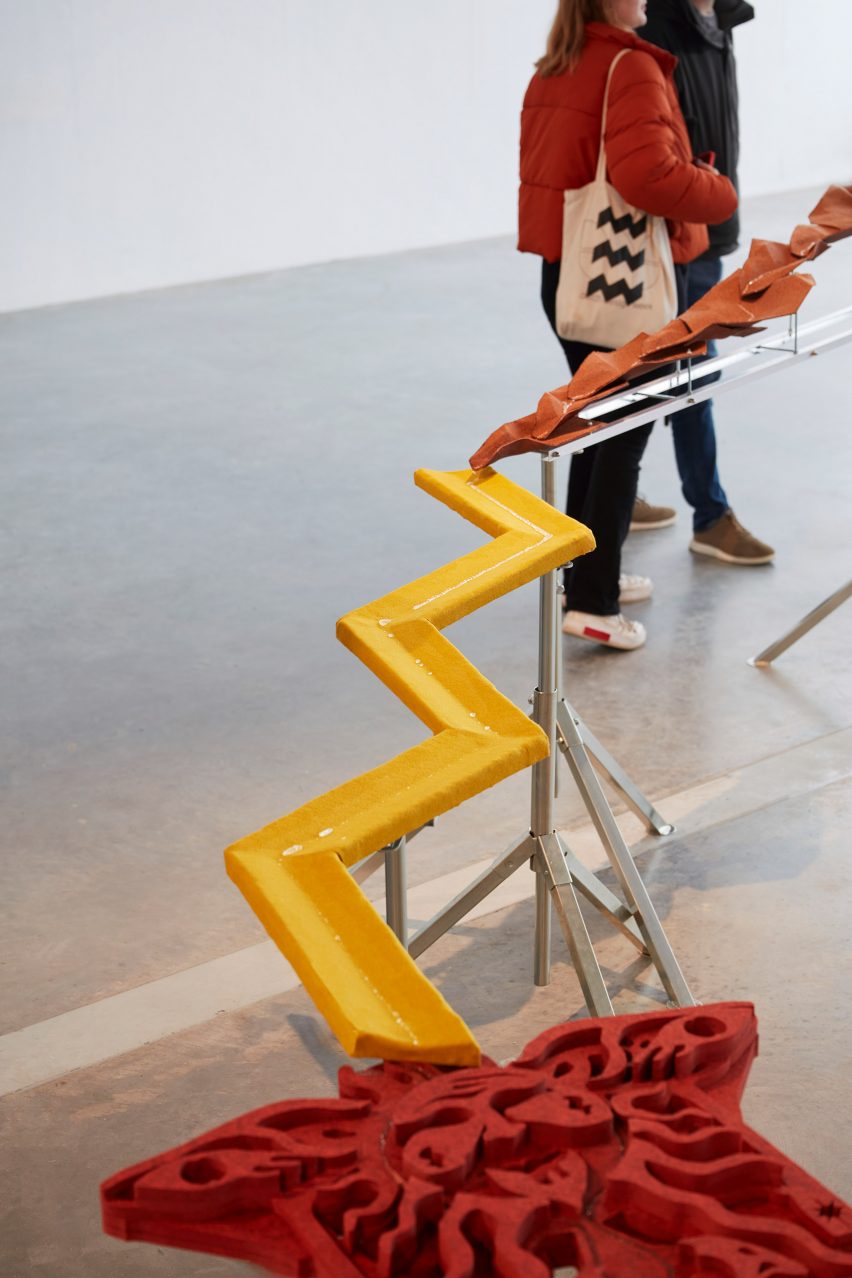
"We tried to focus on a small group of designers this time to really create an experience, something that you will remember, a small thing that brings a smile to your face," he added.
"We were looking for something that could mesmerise. And, of course, one of the super overlooked things in life is water."
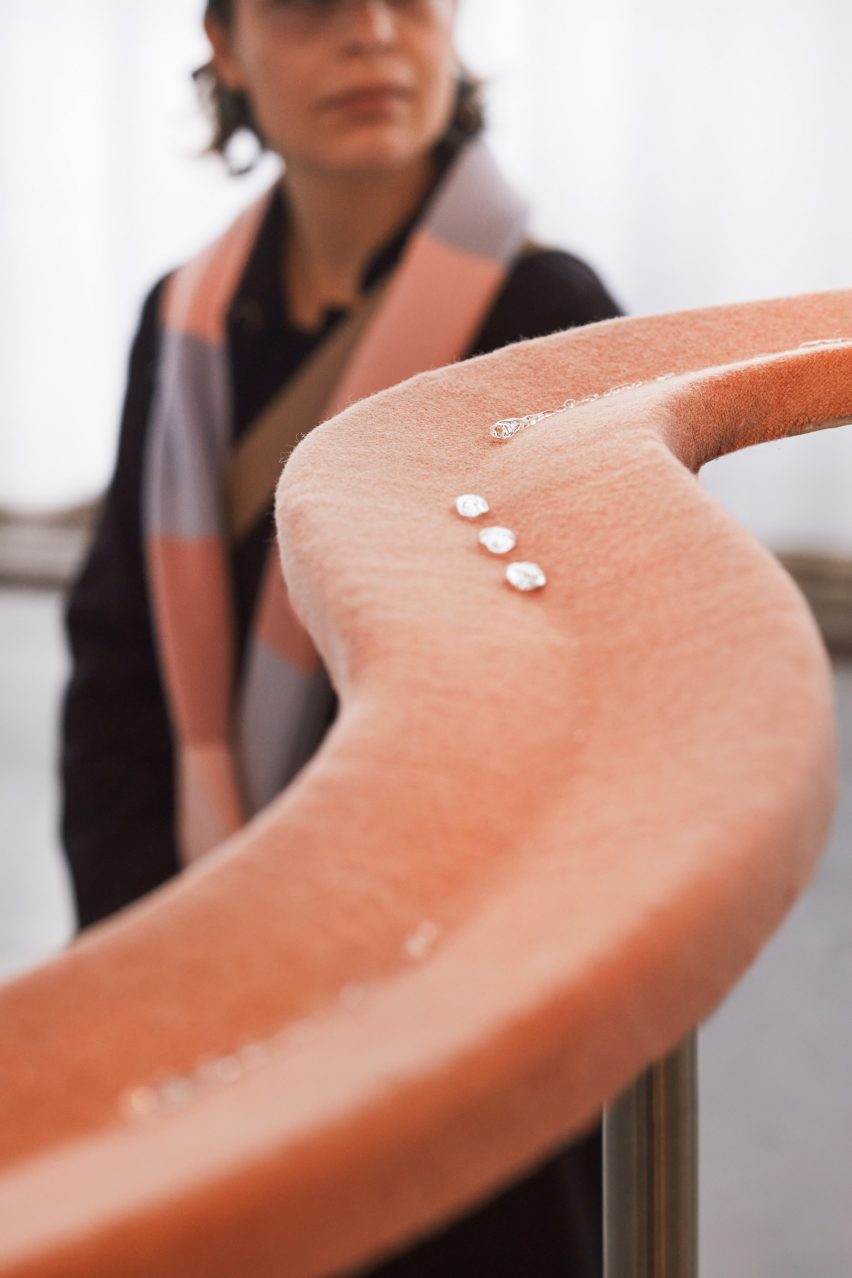
To start the flow of water, the fountain requires visitors to pull a small blue trigger reminiscent of the kind found on a spray bottle.
Designed by Bezold, this mechanism sends water shooting up from a small tank and out of a nozzle to cover a clear plastic dome, mounted high above the heads of visitors using metal tripods.
"His work is really about experience," Van de Craats explained. "We wanted people to be able to kind of stand under the water."
As the droplets accumulate, they start to run down the sides of the dome and down along a leaf-shaped canopy that, much like the rest of the fountain, is made of wool.
"The funny thing is, we were really looking for this water-repelling effect and we tried many materials and coatings," Van de Craats said. "And then, in the end, it was just wool."
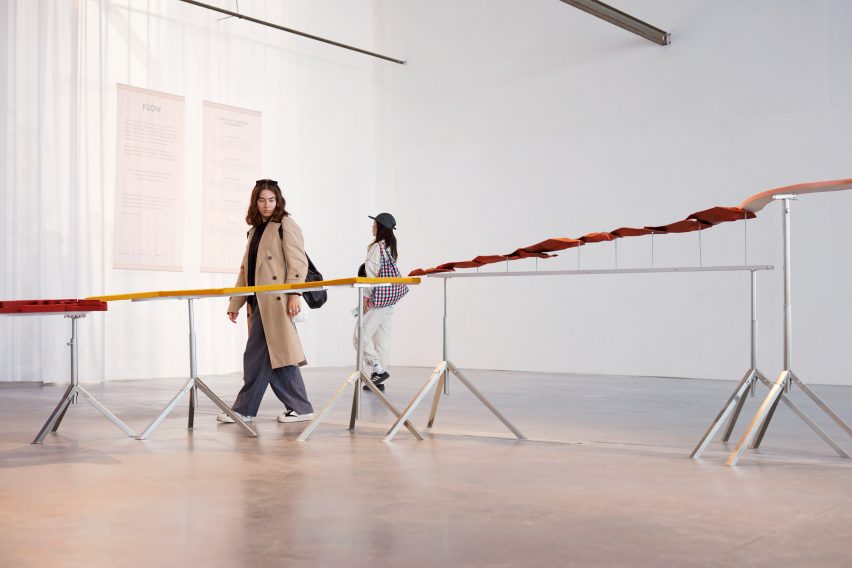
Instead of sinking into the fabric, wool's natural hydrophobic properties cause the water to bead up on the surface of the textile, suspended in place like shiny barbles until enough drops accumulate to form a small stream.
To funnel this steam, EDHV's sections of the fountain were designed as simple chutes, sometimes forming a straight line, sometimes curving or zigzagging but always upholstered in pink or yellow wool.
"We basically said, let us just do the connecting parts," Van de Craats said. "We wanted to make simple shapes and see how water reacts to that."
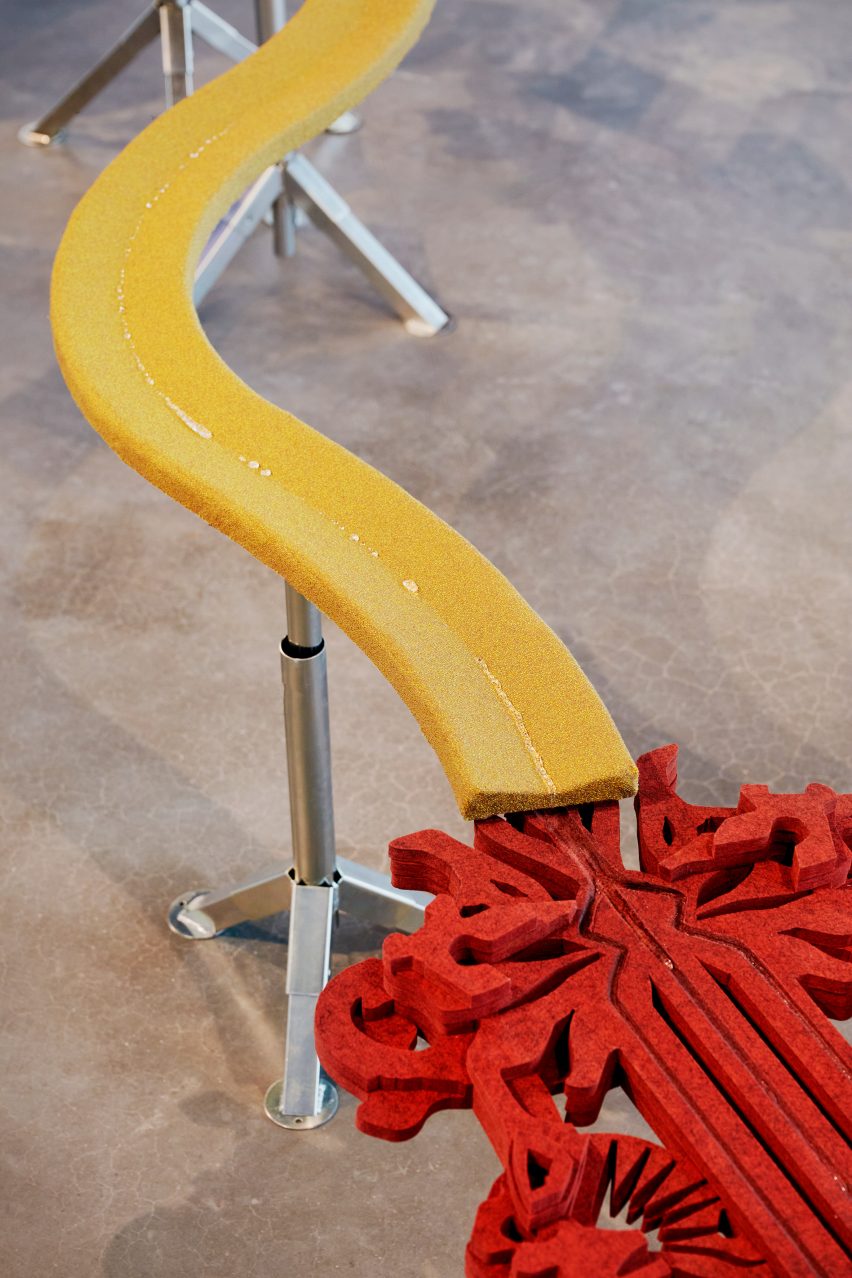
The segments created by Fernández-Pello, on the other hand, were designed to resemble "ritual objects" and are formed from thicker pieces of wool felt engraved with intricate channels.
Here, the water moves much slower and many droplets must accumulate to generate any amount of momentum.
Gloudeman contributed only one section, a row of angular geometric forms reminiscent of leaves or miniature canyons.
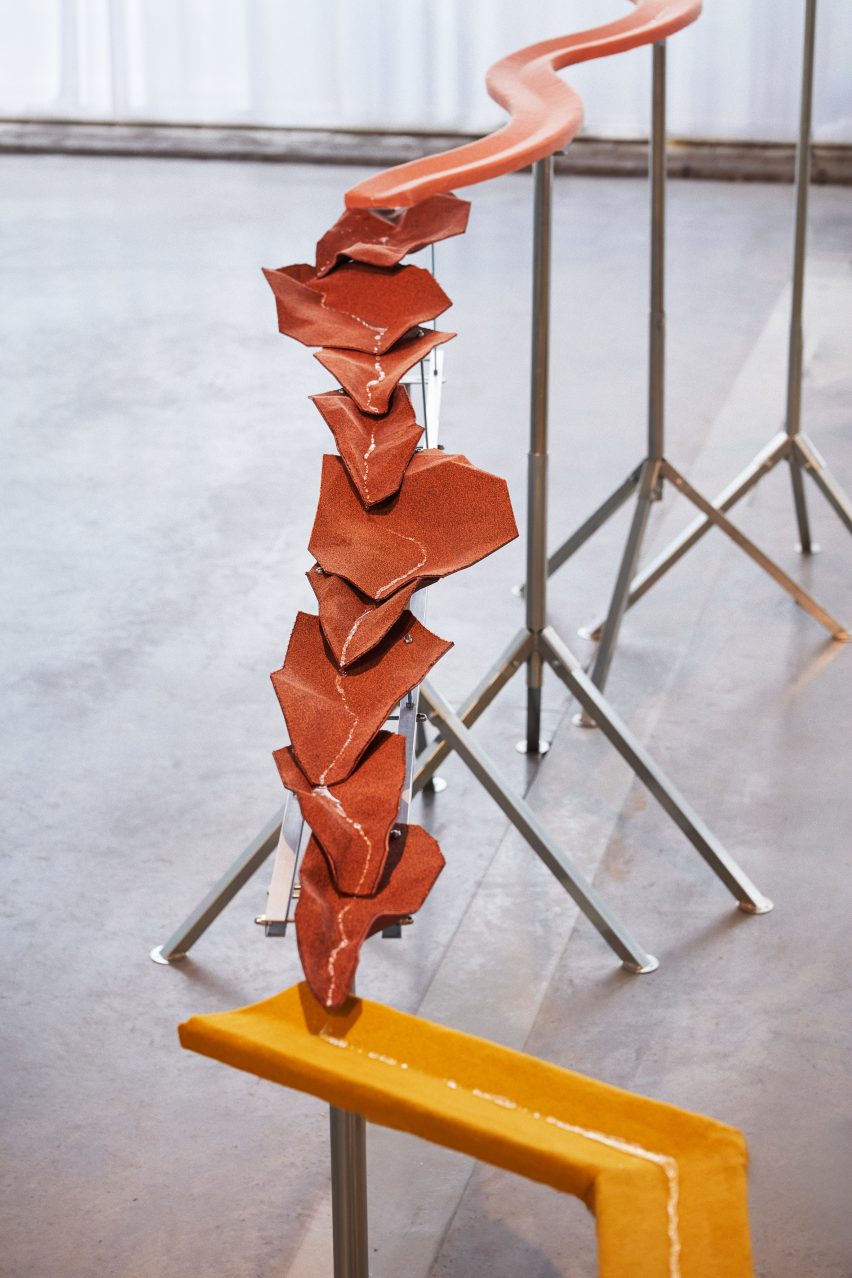
Ultimately, the drops fall onto a hot plate, where they evaporate into steam to enter back into the Earth's water cycle, where they will eventually go on to form clouds and rain.
For Van de Craats, Flow was an opportunity to bring fun and playfulness back to the design process, although the project also brought its own set of difficulties.
"It's quite challenging to focus as a designer on creating an experience or on finding a certain essence and trying to lift that out because designers are so conditioned to come up with solutions or products," he said.
"This is not a solution to anything, it's just getting people to look at something and realise its beauty."
The photography is by Ronald Smis for Dutch Invertuals.
Flow is on display as part of Dutch Design Week 2023 from 21 to 29 October. See Dezeen Events Guide for information about the many other exhibitions, installations and talks taking place throughout the week.